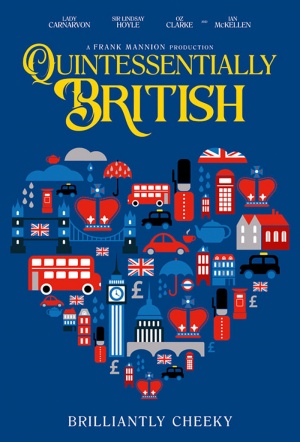
QUINTESSENTIALLY BRITISH
UK, 2022, 97 minutes, Colour.
Directed by Frank Mannion.
Quintessentially itself sounds a very British word. And it is used frequently in this documentary.
For audiences who enjoy British culture and tradition, obviously, a must. For audiences outside Britain, an opportunity to see and hear aspects of British culture (the quintessential aspects), and to listen to a wide range of commentators reflecting on the culture.
By and large, the commentators are very interesting. Ultimately, pride of place with the most comments is actor Ian McKellen, always welcome, initially talking about Shakespeare as the greatest British personality, and highlighting the fact that he was an actor. But McKellen has many things to say on all aspects of British culture, very much middle-class with his Northern background, his own career, his social stances. Very pleasant is Oz Clarke, writer and television presenter, very lively.
The question of upstairs-downstairs surfaces very early in the mind of the audience. The device of the documentary, written and directed by Frank Mannion who appears in various sequences, is to start with the upper-class, references to the monarchy as there are throughout the film, visit to the House of Lords, visits to a variety of castles and Blenheim Palace with lively comment from Lady Carnavon.
But, most of the commentary is middle-class. And, we get panoply of glimpses of all kinds of British culture, from racing, the music of Edward Elgar, films and Downton Abbey, Daniel Craig and James Bond, cricket, of course (but no rugby or soccer). There is fashion (with reference to purchases by the Royal family, the Queen and her purses, Charles and his shoes). Mannion himself spends time in Saville Row, measured for a suit, details of the cutting of the pattern and cloth, shoes to match.
Obviously there are aspects of British culture that we would like to have seen something of. Elgar, yes, but the Beatles! And, as mentioned, football codes.
However, in the latter part of the film, questions that the audience might have had in mind are all answered, especially multi-cultural England, multi-cultural Britain, the role of the Scots, the Welsh, Northern Ireland. But, the range of migrants from the West Indies, from Africa, from the subcontinent, (and some from Italy) are all shown, with a great number of interviews, seeing the migrants in context, as part of the developing British culture, widening and depth thing the quintessential.